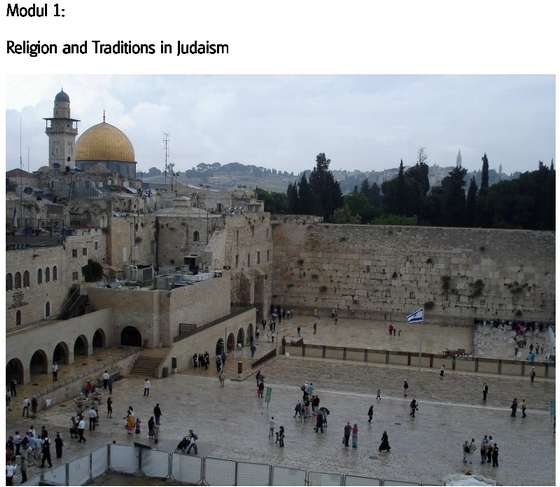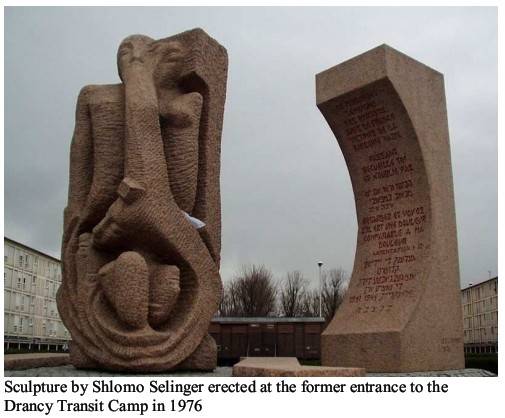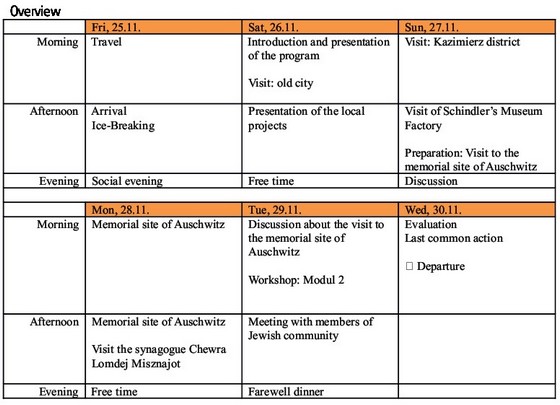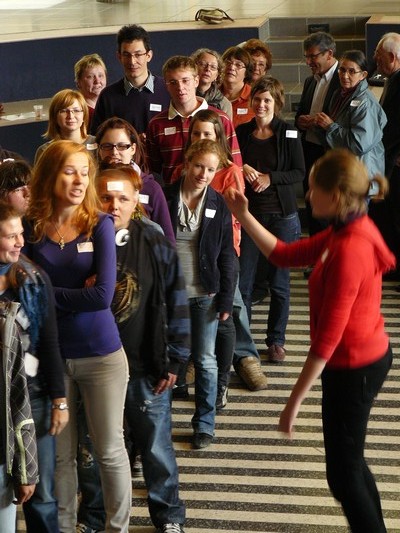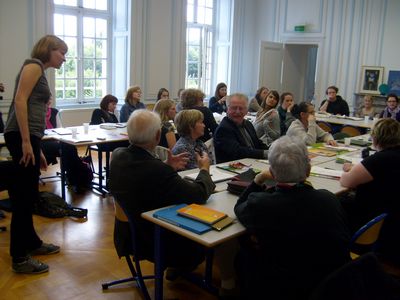
Saturday, January 14 2012
Polish Jewish Survival in the Soviet Union
By bp on Saturday, January 14 2012, 16:32 - Project in Verdun
See this PDF:
Concept-Partners-Methods,
By bp on Saturday, January 14 2012, 15:29 - Project in Europe
The project
Contemporary European history is undeniably entangled with Jewish history. However, Jewish-European history should be viewed and remembered from a number of different perspectives to avoid undue simplifications. It encompasses a long and complex history of discrimination, segregation and displacement as well as the systematic persecution, deportation, and genocide of millions of Jewish people in Nazi-Germany and the occupied countries during the Shoa. But Jewish-European History also encompasses histories of cultural exchange, assimilation, and coexistence. On many levels, Jewish life has had significant impact on European culture, politics, science and scholarly learning, and economy.
European remembrance of the Shoa should not be confined to the persecution of Jewish people in Europe and to the genocide itself: that would mean to portray Jewish people as passive victims. Instead, broad examinations and discussions that integrate different aspects of Jewish history are needed in order to effectively confront tendencies of anti-Semitism in Europe today.
This project wants to contribute to this greater process. In different regions of Europe, youths and young adults will form project teams and have a look at local Jewish traditions. After a first preparatory module, they will do research in libraries and archives and conduct oral history interviews. At meetings with the other project teams, the European dimension of the project and, more importantly, of Jewish history will become apparent to the participants. These meetings will offer possibilities for informal exchange and discussion of the participants’ findings and to discover new aspects of Jewish-European history through on-site learning in Verdun, Berlin, Cracow and Auschwitz as European memory places. Each project team will present their work’s product in print, on a DVD or a homepage – whatever the creative process may require.
The project will last until March 2012. In February 2012 we want to present the results of the projects with a closing event in form of a two-day conference in Potsdam and Berlin. Beside the presentation of the results four lectures about different topics of Jewish-European history in Germany, France, Portugal and Poland are part of the conference.
Methods used:
The project uses methods developed in non-formal civic and historical education characterized by on-site learning and project logic:
Local project teams will meet to discuss general aspects of Jewish religion and culture, aspects of modern Jewish-European history relevant to their respective national context, aspects of the history of the Nazi-Regime, World War II and the Shoa and their European significance, and aspects of the history of Israel and Jewish culture today. In order to be able to do so, they will be provided with learning material (text, images, audio and film material) that will offer a personal approach and help to engage participants in analysis and discussion. This module will consist of workshops and individual work.
This process will be moderated and, if necessary, guided by pedagogical staff of the participating partner organizations. The Learning material will be put together by Zeitpfeil e.V. using their experience from earlier similar projects. Project teams in France, Poland, and Portugal will be provided with English translations of a selection from the material.
In the further course of the project, participants will conduct their own research in their local community. Following the principle of „learning by doing“, they will be introduced to work methods in history projects. This includes techniques of research in libraries and archives, of analysis of oral history interviews as well as basic principles of the analysis of historical sources. Within this framework, local project teams can take a look at the history of Jewish congregations, biographies of Jewish persons, histories of persecution, deportation, exile and expropriation, as well as Jewish life today. Participants will have the chance to present their findings in a number of formats: Guidebooks, fictional or non-fictional film, websites, acting, creative writing …
The project teams will meet at three youth conventions in three European memory places: Potsdam/Berlin, Verdun, and Cracow. There, they will present their work, discuss their approaches and plans but also discuss the present relevance of the historical questions at hand. Intercultural and informal exchange and cooperative learning in European memorials and historical sites, however, are the main objectives of these meetings. The common frame of European history and the relevance of historical questions such as those at hand for contemporary Europe will become tangible at these meetings.
Modul 1 : Religion and Traditions
By bp on Saturday, January 14 2012, 15:26 - Project in Europe
Modul 2 Introduction to Jewish History
By bp on Saturday, January 14 2012, 15:25 - Project in Europe
Modul 3 Culture of Remembrance
By bp on Saturday, January 14 2012, 15:24 - Project in Europe
Terms ASHKENAZ SEPHARDIM MARANO
By bp on Saturday, January 14 2012, 14:39 - Works
Term ASHKENAZ:
Germany: name applied generally in medieval rabbinical literature to that country.
The term Ashkenaz is mentioned in the Hebrew Bible in Genesis 10:3 and 1 Chronicles 1:6 as the dwelling place of a descendant of Noah’s son Japhet, ancestor of later Europeans. In Jeremiah 51:27 it seems to be part of Asia, perhaps Asia Minor, and is located northwest of Palestine. How the place name eventually supplanted earlier descriptive names for German-Jewish lands, such as the Rhineland (Rinus) or the lands of King Lothar (Lotir) is not clear.
Localism was close to the heart of northern European Jews who thought of themselves as belonging to a town more than to a region. Among the earliest Jewish residents along the Rhine River were the Jews of Mainz, Worms, and Speyer. They migrated there from northern France or from Italy, where they had lived for centuries, in some cases as the descendants of slaves the Roman conquerors of Jerusalem brought to Italy in 70 CE.
Although Ashkenaz referred in the Middle Ages only to German lands, the term eventually included northern France and England as well as northern Italy and parts of Central Europe like Bohemia. As Jews migrated into the Polish–Lithuanian Commonwealth, the term broadened to include East European Jews as well. Jews of early Ashkenaz brought their spoken German dialect of Yiddish as well as local customs and practices of Jewish living into Slavic territories.
Term SEPHARDIM (called also Spagnioli, Spaniols, or, more rarely, Franconians):
Descendants of the Jews who were expelled from Spain and Portugal and who settled in southern France, Italy, North Africa, Turkey, Asia Minor, Holland, England, North and South America, Germany, Denmark, Austria, and Hungary. Among these settlers were many who were the descendants, or heads, of wealthy families and who, as Maranos, had occupied prominent positions in the countries they had left. Some had been state officials, others had held positions of dignity within the Church; many had been the heads of large banking-houses and mercantile establishments, and some were physicians or scholars who had officiated as teachers in high schools. The many sufferings which they had endured for the sake of their faith had made them more than usually self-conscious; they considered themselves a superior class, the nobility of Jewry, and for a long time their coreligionists, on whom they looked down, regarded them as such.
Sephardic Jews were a marginal element in Eastern Europe with the exception of Romanian lands, where because of their relatively larger numbers, they played a somewhat more significant role. Jews expelled from the Iberian Peninsula at the end of the fifteenth century, and conversos leaving those lands in later periods, did not settle in Eastern Europe. Those who did move to the region did so after settling first in Ottoman or, much less often, Italian territories. Nevertheless, some Sephardim are established as having resided in various areas of Eastern Europe, arriving from the Balkans and other regions of the Ottoman Empire in the sixteenth and seventeenth centuries. Along with Iberian Jews, there were Italian, Greek or Romaniot, and Arabic- and Persian-speaking Jews who were often identified as Sephardim in Eastern Europe. In addition, Ashkenazic Jews sometimes married and assimilated into the group. (“Ashkenazi” became a common Sephardic surname.)
Term MARANO (plural, Maranos, generally written Marranos):
Crypto-Jews of the Iberian Peninsula. The term, which is frequently derived from the New Testament phrase "maran atha" ("our Lord hath come"), denotes in Spanish "damned," "accursed," "banned"; also "hog," and in Portuguese it is used as an opprobrious epithet of the Jews because they do not eat pork. The name was applied to the Spanish Jews who, through compulsion or for form's sake, became converted to Christianity in consequence of the cruel persecutions of 1391 and of Vicente Ferrer's missionary sermons. These "conversos" (converts), as they were called in Spain, or "Christãos Novos" (Neo-Christians) in Portugal, or "Chuetas" in the Balearic Isles, or "Anusim" (constrained) in Hebrew, numbered more than 100,000.
With them the history of the Pyrenean Peninsula, and indirectly that of the Jews also, enters upon a new phase; for they were the immediate cause both of the introduction of the Inquisition into Spain and of the expulsion of the Jews from that country. The wealthy Maranos, who engaged extensively in commerce, industries, and agriculture, intermarried with families of the old nobility; impoverished counts and marquises unhesitatingly wedded wealthy Jewesses; and it also happened that counts or nobles of the blood royal became infatuated with handsome Jewish girls. Beginning with the second generation, the Neo-Christians usually intermarried with women of their own sect. They became very influential through their wealth and intelligence, and were called to important positions at the palace, in government circles, and in the Cortes; they practised medicine and law and taught at the universities; while their children frequently achieved high ecclesiastical honors.
The Maranos and their descendants may be divided into three categories.
The first of these is composed of those who, devoid of any real affection for Judaism, and indifferent to every form of religion, gladly embraced the opportunity of exchanging their oppressed condition as Jews for the brilliant careers opened to them by the acceptance of Christianity. They simulated the Christian faith when it was to their advantage, and mocked at Jews and Judaism.
The second category consists of those who cherished their love for the Jewish faith in which they had been reared. They preserved the traditions of their fathers; and, in spite of the high positions which they held, they secretly attended synagogue, and fought and suffered for their paternal religion. Many of the wealthiest Maranos of Aragon belonged to this category.
The third category, Temporary Maranos, which includes by far the largest number of Maranos, comprises those who yielded through stress of circumstances, but in theirhome life remained Jews and seized the first opportunity of openly avowing their faith. They did not voluntarily take their children to the baptismal font; and if obliged to do so, they on reaching home washed the place which had been sprinkled. They ate no pork, celebrated the Passover, and gave oil to the synagogue.
Report 26/11/2011
By bp on Saturday, January 14 2012, 14:34 - Project in Krakow
Saturday 26th of November 2011
First Day: Visit of Krakow – Old City
· We began the day with a salty breakfast
· first meeting: we went to the city center – 2 german girls (and we wouldn't tell who) were late
· Martyna our master of ceremony, our boss, said she has to punish them with her special equipment which is still a mystery today
· so we took a bus
· then a tram to go to the city to meet our funny guide Krzysztof
· first of all we went to the Wawel castel
· where we had the explanations about the huge history of Krakow and also different issues about architecture
· for example the building of the cathedral with the three main chapels in front of it
· then we went to the big Renaissance court of the palace
· which was removed and rebuilt several times
· then we saw THE DRAGON !!!!!!!
· afterwards we passed on the oldest street in Krakow
· we saw a church which is quite the same architecture of other ones in Europe especially in Rome : Il Jesù
· on the main place we had a discussion about modern art in front of a gigantic head cut
· passing along the christmas market
· free time
· four French guys and girls and one German girl (i won't tell the name: shame on you!) were late at the meeting
· so the guide put the German girl in jail for a while because French people were hidding behing guide's back (such cowards!!!!)
· Florianska gate is the only wall left from the defense of Krakow, thanks to the lack of underwears of Polish women at that time
· the art museum is very rich but the master pieces are travelling in other museum through the world
· lunch time: czerwony (red) barszcz, chicken with coleslaw and smashed potatoes
· tram to university and then presentation of each projects
· some of us went to the city center while the others came back
· official dinner down town with headmaster of the Institut and the piano playing
· splitting : the most tired ones went home while others went to dance or just to have a few drinkssss
· back home... early, or very late for few of us
· dobra noc!
Term discussion Galut, Diaspora, Exile
By bp on Saturday, January 14 2012, 13:09 - Works
Crakow – term discussion Galut/Diaspora/Exile
Galut:
The Hebrew term galut expresses the Jewish conception of the condition and feelings of a nation uprooted from its homeland and subject to alien rule. The term is essentially applied to the history and the historical consciousness of the Jewish people from the destruction of the Second Temple to the creation of the State of Israel. The residence of a great number of members of a nation, even the majority, outside their homeland is not definable as galut so long as the homeland remains in that nation’s possession.
Only the loss of a political-ethic center and the feeling of uprootedness turns Diaspora (Dispersion) into galut (Exile). The feeling of exile does not always necessarily accompany the condition of exile. It is unique to the history of the Jewish people that this feeling has powerfully colored the emotions of the individual as well as the national consciousness. The sense of exile was expressed by the feeling of alienation in the countries of Diaspora, the yearning for the national and political past, and persistent questioning of the causes, meaning, and purpose of the exile.
Diaspora:
The word diaspora, from the Greek διασπορά (“dispersion”), is used in the present context for the voluntary dispersion of the Jewish people. As such it confines itself to Jewish settlement outside Erez Israel during the periods of Jewish independence or compact settlement in their land. It therefore applies to the period of the First Temple, the Second Temple, and that subsequent to the establishment of the State of Israel. The only dispersion during the period of the First Temple of which there is definite knowledge is the Jewish settlement in Egypt referred to in Jeremiah 44. By the same definition, the Jewish communities in the world at present, after the establishment of the State of Israel, constitute a Diaspora, and since that event the custom has developed of referring to them in Hebrew as the tefuẓot, the Hebrew equivalent of Diaspora, in preference to the word previously used, golah, or galut. By far the most important Diaspora during the period of the Second Temple was that of the Greco-Roman world.
Exile:
Assyrian:
The mass deportation of population groups from conquered nations, as a measure to prevent these nations from rebelling, was introduced as a general policy by Tiglath-Pileser III in the second half of the eighth century B.C.E. Although deportation by Assyrian kings is well attested in the ninth century, it was Tiglath-Pileser’s innovation to practice deportation on a vast scale and to accompany it with population exchange; a practice continued by his successors in Assyria. (The Babylonians did not accompany deportation with population exchange.) The first deportation of peoples from the northern Israelite kingdom took place when Tiglath-Pileser III campaigned against Syria and Palestine (734–732 B.C.E.), at which time *Pekah son of Remaliah joined the rebellion led by the king of *Aram-Damascus against Assyria. In the course of this campaign the Assyrians conquered Gilead and deported the heads of the Israelite clans that inhabited Transjordan (I Chron. 5:6, 26). One of Tiglath-Pileser III’s fragmentary inscriptions lists several thousand captives, apparently only males, whom he exiled from eight cities in Galilee (among which were biblical Hannathon, Jotbah, Rumah, and Merom).
Babylonian:
Exiles of Judah to Babylonia, sixth–fifth centuries B.C.E. Although Babylonia was not the only destination of former Judahites, it was the Babylonian deportees and their descendants whose perspectives inform the Hebrew Bible. As punishment for the rebellion, Nebuchadnezzar sent into exile the young king and his family, royal officials, warriors, artisans, and other distinguished people from Jerusalem and Judah, and took much spoil from the Temple and palace. The number of exiles is reported in round numbers once as 10,000 exclusive of artisans (II Kings 24:14) and once as 7,000 “mighty men” and 1,000 artisans (II Kings 24:16). The destruction of the state and the Temple and the exile to Babylonia were traumatic experiences that concomitantly brought forth desires for revenge and stirrings of repentance. Feelings ran strong not only against Babylon (Isa. 47; Jer. 51; Ps. 137) but also against neighboring Edom, which rejoiced at, and benefited from, the destruction (Ezek. 25:12–14; 35:1ff; Obad.; Mal. 1:3–5; Ps. 137:7; Lam. 4:21–22).
Tuesday, January 10 2012
Program Potsdam Berlin
By bp on Tuesday, January 10 2012, 19:12 - Project in Potsdam
Jewish Histories in Europe
18th - 23th February 2012
|
Saturday, 18th of February |
|
|
9.00-13.00 |
Arrival in Potsdam |
|
Until 16.00 |
Visiting Potsdam (Park Sans Souci) / Berlin – free time for everyone |
|
16.00-18.00 |
First meeting and presentation of the programme |
|
19.00 – 21.00 |
Dinner (Potsdam) |
|
|
|
|
Sunday, 19th of February |
Potsdam |
|
8.30 – 9.00 |
Breakfast |
|
10.00 – 13.00 |
Visit Potsdam and Jewish marks in Potsdam |
|
13.00 – 14.00 |
Lunch |
|
14.30 – 17.30 |
Workshop „Remembrance” at Zeitpfeil office |
|
19.00 – 20.30 |
Dinner (Potsdam) |
|
|
|
|
Monday, the 20th of February |
Berlin |
|
8.00 – 8.45 |
Breakfast |
|
10.00 – 12.30 |
Visit House of the Wannsee Conference |
|
13.00 – 14:00 |
Visit Memorial site Gleis 17 station Grunewald |
|
15.00 – 17.00 |
Meeting with students of the Abraham Geiger Kolleg in Berlin |
|
17.00 – 20.00 |
Free time in Berlin Optional: Visit of different quarters in Berlin (Charlottenburg, Prenzlauer Berg, Kreuzberg, Mitte) with participants of the German group |
|
20.00 |
Common dinner in an oriental food restaurant in Berlin |
|
|
|
|
Tuesday, the 21th of February |
Lectures and Presentation at Zeitpfeil office |
|
8.15 – 9.00 |
Breakfast |
|
10.00 – 13.00 |
Welcome Lecture about Jewish-German history Presentation of the German group (15 min) Lecture about the Jewish-Portuguese history Presentation of the Portuguese group (15 min)
|
|
13.00 – 14.00 |
Lunch (catering) |
|
14.00 – 15.30 |
Presentation of the French group (15 min) Lecture about the Jewish Polish history Presentation of the Polish group (15 min) |
|
15.30 – 17.00 |
World café – discussion of the different projects with the international groups Summary |
|
17.30 – midnight |
Free time – option to go to Berlin |
|
18.00 – 20.00 |
Meeting of the groupleaders and evaluation |
|
20.30 – 22.00 |
Dinner of the groupleaders and participants (who wants) |
|
|
|
|
Wednesday, the 22th of February |
Berlin – Jewish History |
|
7.45- 8.30 |
Breakfast |
|
10.00 – 13.00 |
Visit of the Jewish Museum in Berlin |
|
13.00 – 14.00 |
Lunch |
|
14.00 – 16.30 |
Guided tour from Jewish Museum to Centrum Judaicum (visiting marks of the Wall, Holocaust Memorial site, Brandenburg gate, Oranienburger street) |
|
16.30 – 18.00 |
Visit Centrum Judaicum |
|
18.30 |
Return to Potsdam |
|
20.30 – midnight |
Dinner and Party |
|
|
|
|
Thursday, the 23th of February |
|
|
8.00 – 9.00 |
Breakfast |
|
10.00 – 11.00 |
Evaluation, last common action |
|
12.00 – 13.00 |
Lunch |
|
|
Departure |
Samedi 23 juillet 2011
By bp on Monday, January 9 2012, 18:31 - Project in Verdun
Report of 26 July 2011
By bp on Monday, January 9 2012, 17:01 - Works
International meeting in Verdun about Jewish Tradition and Culture in Europe
Report of 26 July 2011: Jewish tradition, culture and history in each country
Centrum Polsko-Niemieckie
By bp on Monday, January 9 2012, 16:38 - Project in Krakow
